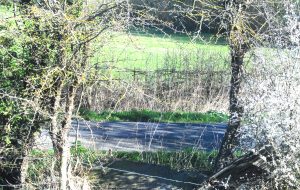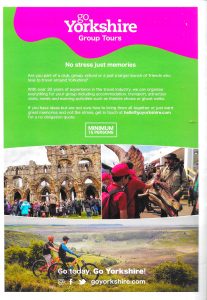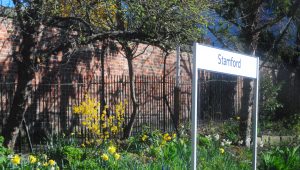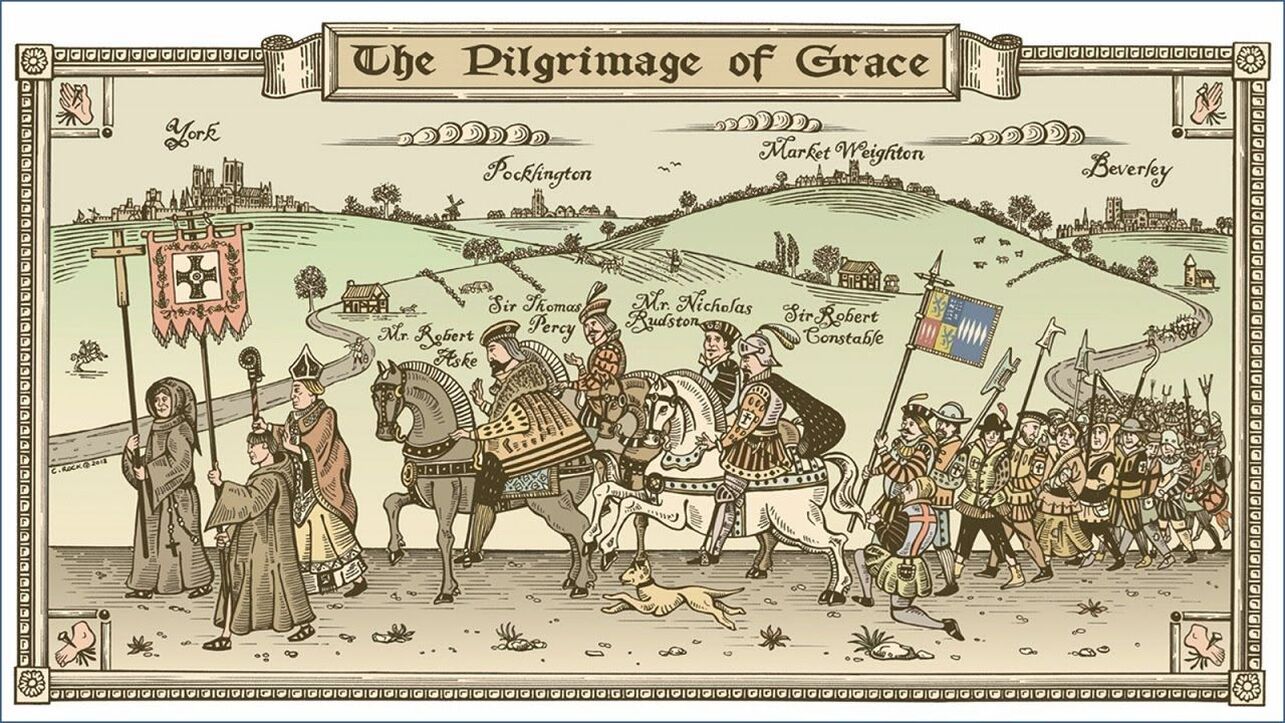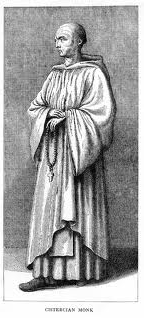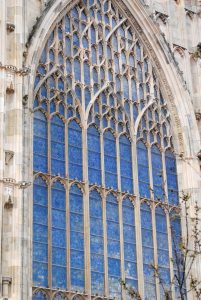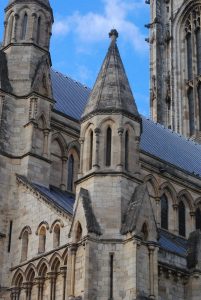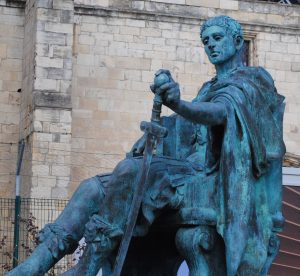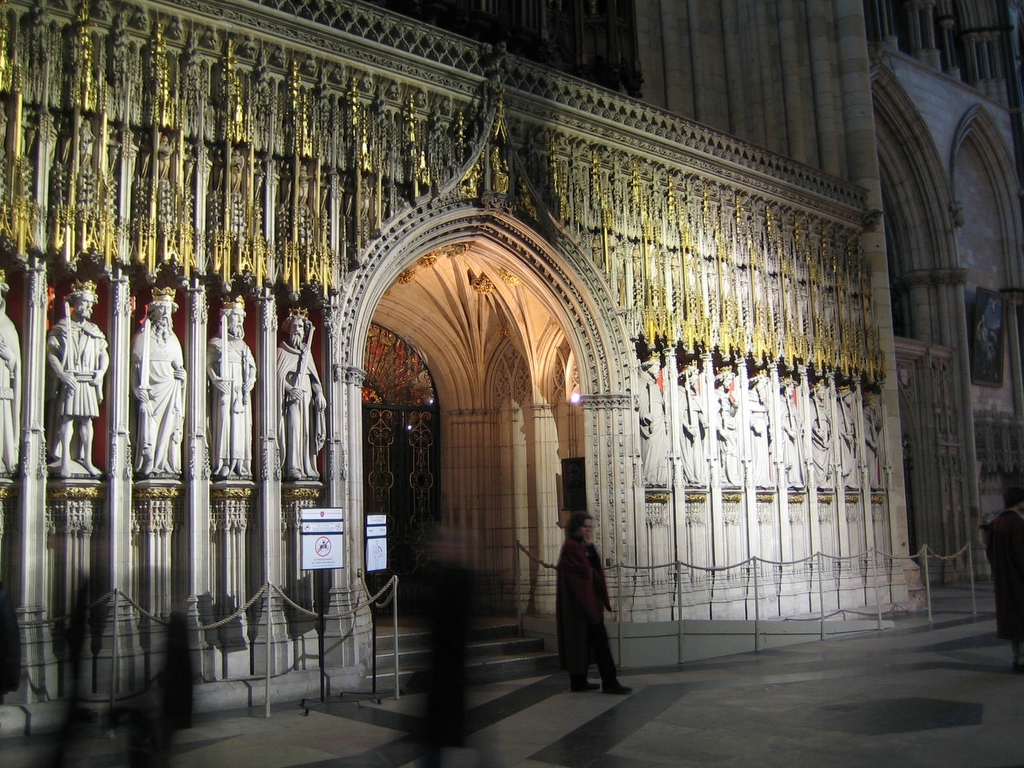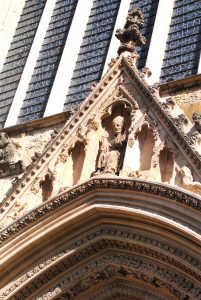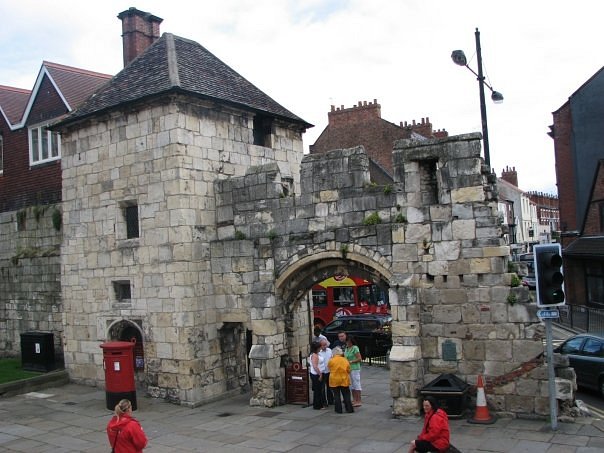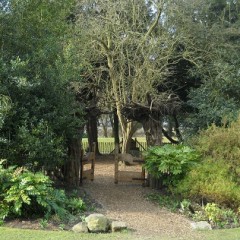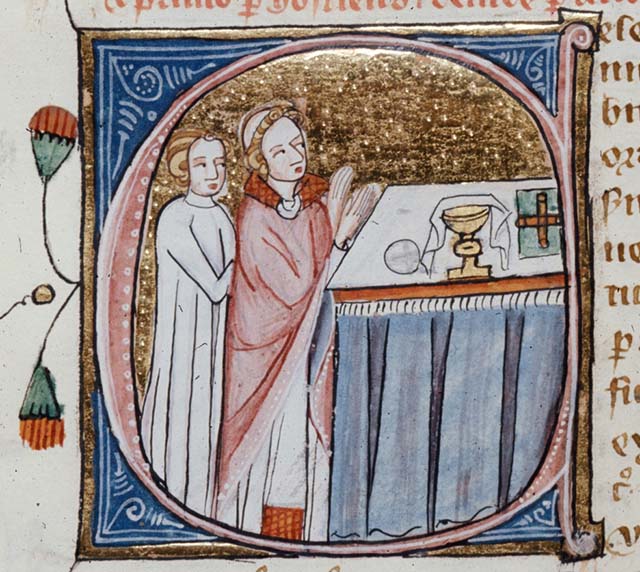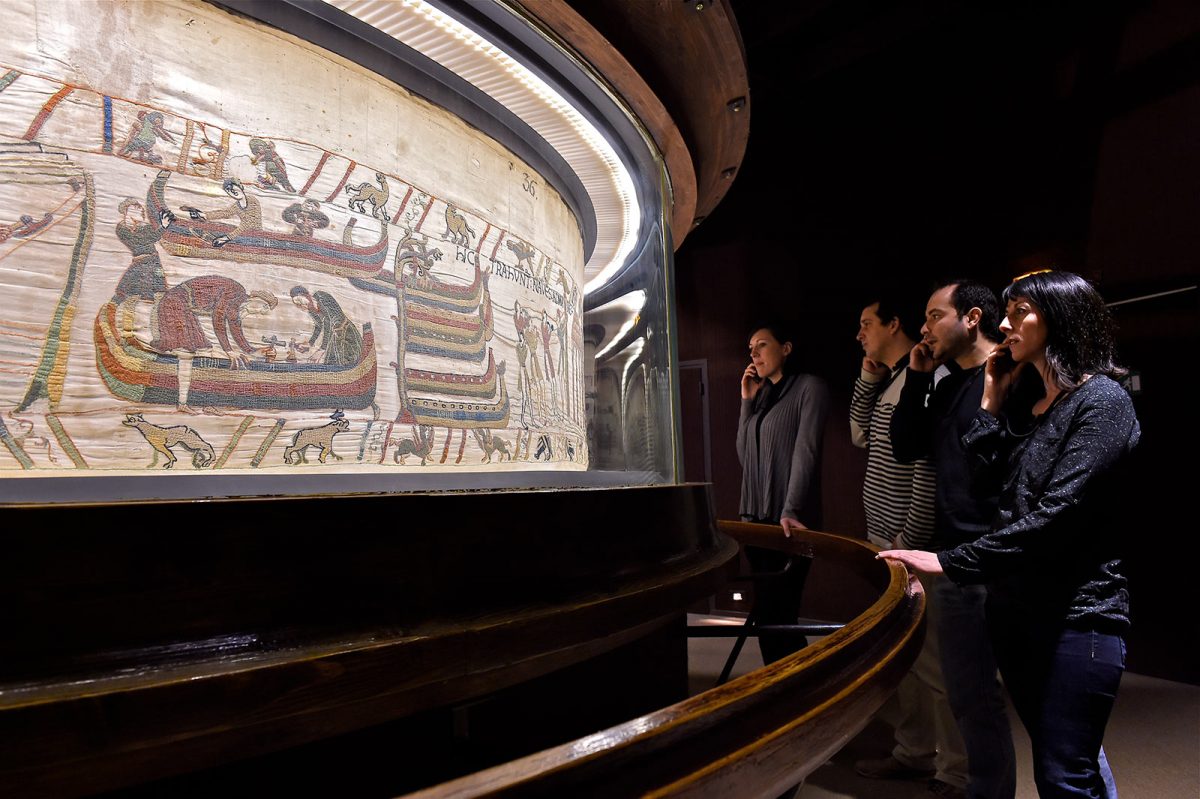Another Crazy Day on a Vacation that went crazy despite great planning HONEST
The day started out good—but—-we left the motel and took a taxi 1/2 mile to the Leicester train station.
www.thedungeons.com/York
That went well…..in Peterborough we went to where we were directed to catch the train to York—-But it was running really late and eventually we found that the train we had tickets on wasn’t coming and the train we were put on was the next scheduled train and we soon found that there weren’t seats enough for us…..I finally was able to locate a couple seats for my friends but there wasn’t a third—I ended up with a group of people—including a couple and a cute (much too young for me but I can still look—right? RIGHT!) gentlemen that worked for the train company.
We all became aquainted standing near where the two cars connected and telling each other the purpose of our trip and all that……when we started to pull close to our destination I asked for Help—I had a major share of everybody’s luggage (for us three, not the group in the connection) So I ask the Railway gentleman if he’d help me get the luggage off—-and then the couple— volunteered to hold up the passengers exiting thru the area we were standing in so that we could clear with no problems.
If you have heard the Brits are boring and not much fun you definately haven’t met any—-and we got me off the train–with a strong young man shouldering the luggage and without being either of us or the luggage overran from the over-crowded train.

Guess who?—my saviors from the train—after they saved me, as well as luggage and even the train guy—thanks so much—and no harm done to anyone. Such fun. And all in York Safe and sound. And met up with the rest of my party who set comfortably the whole trip.
Is York Worth Visiting in 2023? Best Things to Do & Reasons to Visit
The National Railway Museum, York: Offering three giant halls packed full of incredible trains and interative fun, thisaward winning museum has an exciting rolling programe of exhibitions running throught the year.
IMMERSE YOURSELF IN THE HOME OF ICONIC LOCOMOTIVES AND AN UNRIVALLED COLLECTION OF ENGINEERING BRILLIANCE
Oh and I did get a few views out the window on the way to York
yorkcitysightseeing.co.uk
Melton Mowbray (/ˈmɛltən ˈmoʊbri/) is a town and unparished area in the Melton district in Leicestershire, England, 19 miles (31 km) north-east of Leicester, and 20 miles (32 km) south-east of Nottingham. It lies on the River Eye, known below Melton as the Wreake. The town had a population of 27,670 in 2019. The town is sometimes promoted as Britain’s “Rural Capital of Food”; it is the home of the Melton Mowbray pork pie and is the location of one of six licensed makers of Stilton cheese.
Read more at
Melton Mowbray
\
yorkshirehideaways.co.uk
Visit Oakham
The historic market town of Oakham (county town of Rutland), probably took its name from a local Saxon lord named ‘Occa’. The town church dates from the 12th-c and features some fine medieval carvings and unusual nave capitals. It shares its churchyard with Oakham’s 16th-c private School. One of the largest independent co-educational schools in the country, with around 1000 pupils. The school was founded by Archdeacon Robert Johnson, in 1584, along with Uppingham School (located just a few miles away).
Learn more at:
Oakham
www.yorkshireairmuseum.org
and finally in York
Take a cab to your hotel

The city retains much of its medieval character and structure and walking into its center was (very accurately I must say) described in something I read as like “walking back in time.” There are still many of the ancient timbered houses setting on the narrow, winding streets–the Shambles come to mind—and they’re all protected by a conservation order. Also no cars in the center of town which furture adds to the atmosphere—and there’s lots of bikes moving over the cobbled streets.
We got some lunch at hotel and then headed out on the city—too soon to check in—they held our luggage.
Head SW toward St. Maurice’s Rd/A1036
We have mentioned Henry’s (the 8th one) Desolation of the Monasteries. This started with the smaller ones but this gradually esculated to larger monasteries and more violent measures of destruction and by 1536 it had fostered serious unrest with the people of the north.
Turn right onto St. Maurice’s Rd/A1036
The second rising at Yokshire and north known as
The Pilgrimage of Grace.
This was the second rising in Yorkshire and the north and a much more serious one. Far from the much more inhabited south, this northern land was often barren–the towns here were fewer and as they say “far between” and the monks instead of evil money graspers as Henry said they were—here were considerd holy and helpful and were evidentally quite popular. Infact in Yorkshire they were the only people that helped and provided hospitality to the wandering beggars as well as the ordinary traveler.
Turn left onto Gillygate/A1036
Continue to follow A1036
Turn Left onto Duncombe Pt
YORKSHIRE’S CISTERCIAN ABBEYS
The work of the Cisterns who were sheep farmers also helped the country where agriculture was at best difficult and they were seeing the writing on the wall: That the dissolution of the larger Monasteies was just a matter of time.
Continue straight onto Precentor’s C
Criminals and Executions in York
A Lawyer named Robert Ashe musteered the rebels on Shipworth Moor and then took possession of York. The expelled monks were restored to their monasteries.
The king then sent the Duke of Norfolk to Yorkshire but when he later reached Dorchcester he found the rebels 30,000 strong and too formidable to risk a battle. SO he adopted the usual expidient in such cases—general promise of pardon if the rebels should submit and this was successful for the time being.
But a further outbreak (1537) gave the King an excuse to act with ferocity congenial to his temper. “You shall in anywise” he wrote to his agents “cause such dreadful executions to be done upon a good number of the inhabitants of every town village and hamlet…as well as by the hangings or quartering with their head and quarters being distributed and put on display at all the towns great or small as a warning.”
Arrive at York Ministe
York Minster
Unfortnately we could not visit the church as it was Easter time and the church was basically only open for worshipers.
It has been called the finest example of decorated style in England. The roof is of wood, but painted to look like stone.
It has 125 stained glass windows (14th and 15th c)
Tour Historic York Minster – One Of England’s Oldest Cathedrals
The Minster is one of England’s most popular attractions. It is reported to have over two million visitors (from everywhere) annually from all over the world. But this is fitting as it took over 250 years to build and its caving are fantastic and it has a huge collection of stain glass windows. The Minster has a rich arrays of chapels, monuments and tombs.
Interactive Map of the Minster
It has a 13th c Charater House. There is an Undercroft Museum and Treasuary with Saxon and Roman items. The crypt features some of Minsters oldest treasurers.
There are 275 steps in the central tower which gives a great view of the cathedral an a magnificant panorama of York.
Facts:
Length 525 ft (160 meters)
Height to Vault: 88.5 feet (27 meters
West Towers: Nearly 184 feet each (56 meter)
Lantern Tower: 233 feet (71 meters)
This is:
The largest Medieval church in England
It has the largest area of medieval glass north of the Alps
627 AD: First church a wooden chapel was built here for baptism of King Edward of Nortumbia
Current Church is the 5th one built and dates from about the 13th – 15th c AD..
It has mingling styles with the west front decorated with Perpendicular towers .
The South West tower has 12 bells—the 13th bell hangs alone (Big Peter is rung only at noon).
It rises from the remain of a Roman garrison headquarters.
It’s Rose window commerates the marriage of Henry VII to Elizabeth York.
It has surviveed several catastrophic fires including one in 1984 and is famed for it’s magical stained glass as we mentioned previously. There is an immense 15th century window in the east which is the size of a tennis court.
The Tansports are the oldest part of the church–Early English–5 windows dating 1305.
There is also an Astronomical Clock commerating Airmen killed in WWII.
The Under Croft Museum contians Roman architecural fragments.
The Treasury hold the Horn of Ulf (1020) and surgical utensils.
Choir has a Lady Chapel with an early rood screen and statues of 15th c English Kings.
In Medieval York, the abbey sat opposite and mirrored the Minster–two greatbuilding dedicated to worshiping.
Turn left onto Gillygate/A1036
The monks spent their days working copying books, trading with merchants, providing food and supplies for the monasterey and managing it’s states and of course providing for the poor.
Turn right into Bootham/A19
Ruins of walls of the nave and crossing of the abbey church, where the monks prayed and sang and the cloisters where they shed their clothes, contemplated and were allowed to speak,
Turn left onto Marygate
The gateway on Marygate next to St. Olave’s church was at one time the main entrance to the Abbey—where the poor came to claim their alms. The building (now St. Mary’s Lodge) is the current headquarters of the Museum Trust
Next Stop the Museum Gardens, an idying haven with an array of plant species, wildlife and historical feature to explore.

Established in the 1830’s by theYorkshire Philosophical Society, the gardens are famed for their trees, shrubs, perennials and bulbs all set among the medieval ruins of St. Mary’s Abbey–-can’t beat that.
in 223 feet turn left
The Gardens have ice cream at Ice Cream Rescue. Further into the gardens is Sketch by Origins on some day it offer drinks and snacks take away from the Pavillion.
in 157 ft, turn left
‘Public conveniences’, Bootham Bar and elsewhere
But while you have drinks and such there are no toilets in these gardens—the nearest ones are at Bottham Barr as well as the city Centre at SIlver Street.
Turn left in 85 ft
But long before Henry VIII, York was the site of Royal Wrath—both as a site to conquer and then to use that site for (including two castles he had repaired) f a base for Remorseless and Relentless
Harrying The North:
115 ft make a slight right
The Bloody Aftermath of the Battle of Hastings – YouTube
The exact scale of all this is only speculated on but it has been described as devastating with many thousands dead, from both violence and famine.
Museum Gardens on right on Museum Street
Story Telling Area in Museum Gardens
Simeon of Durham recalled the Harrying: “It was horrible to observe, in houses, streets and roads, human corpses rotting…For no-one survived to cover them wih earth, all having perished by the sword and starvation, or left the land of their fathers because of hunger.”

William the Conqueror
Some feel that William may have grown to regret the level of destruction he wrecked on York and the north. Chronicler Orderic Vitalis tells us the King confessed on his deathbed on his treating “the native inhabitants of the kingdom with unreasonable severity, cruelly oppressed high and low, unjustly disinherited many, and caused the death of thousands by stavation, and war, especially in Yorkshire.
Nevertheless the operation achived his aim. The Rebellion was defeated and the population subdued
Head southeast toward Lendai
Bayeux Tapestry—the story of the Battle of Hastings between the Vikings and the English in Normandy area today.
Prior to the Normans there had been other North Men in York. (which is basically what Norman stood for.) They were originally part of the Viking raiders that terrified Europe and beyond before they settled in France and did more refined terrifying). The Period between the demise of Eric Bloodaxe in 954 and the arrival of the Normans in 1068 is known as the Anglo-Scandinavian. York was ruled by an English King but was still very much influenced by Viking culture.
In 476 ft make a slight left onto Lendal
For the period York during this time was relatively peaceful. Eric had been defeated by the English King Eadred, who died a year later in 955, eventually suceeded by his nephew Egar, who ruled England from 959 – 975, which is called “the Pacable as there were no foreign attacks.
Continue 36 feet
Turn left onto Musum St/A1036
According to accounts from that time period York was a major city of about 30,000 citizens. “The city was crammd beyond expression.” so the accounts of the city say “and enriched with treasures of merchants, who come from all parts, but above all from the Danish people.’
Continue 341 feet
Continuing onto Duncombe Pl
Even though York was important, English kings did not come here—at least only rarely. They did however appoint earls to keep a grip on Northumbia. There is a legend that an invading Viking leader King Svein Forkbead of Denmark was buried in York proper in 1014.
In 397 ft
Continue onto Goodramgate
The Real Richard III

Portrait of King Richard III, The National Portrait Gallery / Benedict Cumberbatch photo: UKderivative work: Photo: RanZag (talk). commons.wikimedia.org
is it just me or do those two look a bit alike????? Click on the link above picture for more info
Another person and a King eventually—that had an attachment with York (as the cab driver pointed out earlier) was Richard III—the one whom an Elizabethen playwright wrote a bad review (but a good play) about him that has until recently greatly affect his reputation.
RICHARD III: HERO OR VILLAIN?

Richard III visited York on several occassions during his short reign and staying for 3 weeks in 1483.
How Did King Richard III’s Remains End Up Under a Parking Lot?
Continue 476 feet onto Monkgate
Burial places of British royalty
It even has been reported that Richard planned his eventual burial at York Minster, building (or rather having built) an enormous chantry chapel there with 100 chaplins to attend his body and pray for his soul.
RICARDIAN PLACES: York
in 105 feet turn right onto St. Maurice’s Rd/A1036
HIS LIFE & DEATH
York looked to Richards to assist in times of economic difficulty and Richard does appear to have championed them in his short reign. The city sent troops to support him over this time—including to help him against Henry Tudor–unfortunately those troops arrived to find Richard dead and the Tudor’s assuming control of the country.
AN INTRODUCTION TO TUDOR ENGLAND (1485–1603)
in 22
3 ft turn left
Destination will be on the left in 72 ft.
and we’ve arrived back home:
Double Tree By Hilton
St Maurice Rd ===York
Thaks for oining us and will see you all next Friday for another bits and pieces.




